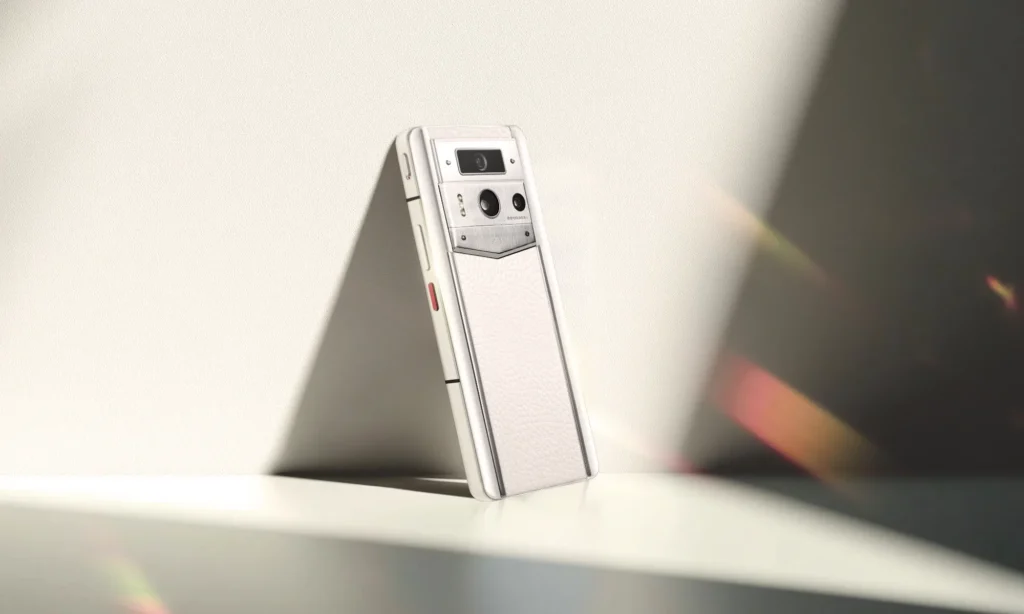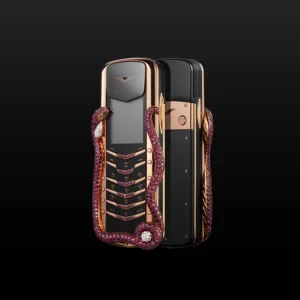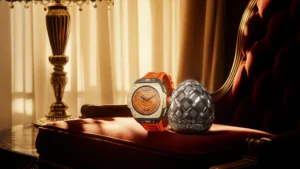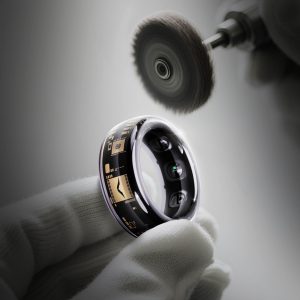Struggling to track your athletic progress or stay motivated during workouts? Unlock your peak performance with the right smart wearable.
What You'll Learn:
- The growing importance of smart wearables in sports for 2025.
- Key features and benefits of top-tier and budget-friendly sports wearables.
- Essential criteria for selecting the perfect smart wearable for your fitness journey.
Why Smart Wearables for Sports Matters in 2025
The integration of technology into our athletic pursuits has moved beyond a trend to a fundamental aspect of modern training. In 2025, smart wearables are indispensable tools for athletes of all levels, offering unparalleled insights into performance, recovery, and overall health.
Current Market Trends
The wearable technology market continues its explosive growth, driven by advancements in sensor technology, AI-powered analytics, and increasing consumer demand for personalized health and fitness data. We're seeing a significant shift towards:
- Advanced Health Monitoring: Beyond basic step counting, wearables now offer ECG, blood oxygen saturation (SpO2), stress tracking, and even skin temperature monitoring.
- Personalized Coaching: AI algorithms analyze your data to provide customized workout recommendations, recovery advice, and sleep optimization strategies.
- Seamless Integration: Devices are connecting effortlessly with smartphones, fitness apps, and other smart home devices, creating a holistic ecosystem.
- Durability and Water Resistance: A key focus for sports wearables is robust construction to withstand extreme conditions and water activities.
Future Outlook
Looking ahead, the future of sports wearables is even more exciting. Expect to see:
- Non-invasive Glucose Monitoring: A holy grail for endurance athletes, this technology could revolutionize how athletes manage their energy levels during long events.
- Hydration and Electrolyte Tracking: Wearables that can accurately monitor hydration levels will become crucial for performance optimization.
- Enhanced Biometric Feedback: Deeper insights into muscle oxygenation, fatigue levels, and even mental state will become commonplace.
- Augmented Reality Integration: Wearables that can overlay training data or virtual coaching directly onto your field of vision.
“The next generation of wearables will be less about data collection and more about actionable insights and proactive health management.” – Dr. Anya Sharma, Sports Technology Analyst
Top Smart Wearables for Sports Options
Choosing the right wearable depends on your specific needs, budget, and the sports you participate in. Here’s a breakdown of some leading options:
Premium Solutions
These devices offer the most advanced features, comprehensive data tracking, and often, superior build quality.
- Garmin Forerunner Series (e.g., Forerunner 965): Renowned for its unmatched GPS accuracy, extensive sports profiles, and in-depth training metrics, the Forerunner is a favorite among runners and triathletes. It offers advanced features like training load, recovery time advisor, and running dynamics.
- Apple Watch Ultra 2: A powerhouse for general fitness and outdoor activities, the Apple Watch Ultra 2 boasts exceptional durability, a bright display, and deep integration with the Apple ecosystem. It excels in tracking a wide variety of activities and offers advanced health features.
- Coros Pace 3 / Apex 2 Pro: Coros has made a significant impact with its long battery life and robust performance tracking, particularly for endurance athletes. They offer excellent GPS, advanced training metrics, and a focus on reliable data.
Budget-Friendly Alternatives
You don't need to break the bank to get valuable fitness tracking. These options provide excellent core functionality.
- Fitbit Charge 6: A versatile all-rounder, the Charge 6 offers reliable heart rate tracking, sleep analysis, GPS, and a good range of activity profiles. Its user-friendly interface and integration with the Fitbit app make it accessible for beginners.
- Amazfit GTR/GTS Series: Amazfit devices often provide excellent value for money, packing in features like AMOLED displays, comprehensive health monitoring (ECG, SpO2), and built-in GPS at competitive price points.
- Xiaomi Smart Band 8: For the absolute basics with a touch of smarts, the Xiaomi Smart Band 8 is a compelling choice. It's lightweight, affordable, and tracks steps, heart rate, sleep, and multiple sports modes effectively.
Here's a quick comparison of some popular premium and budget options:
| Feature | Garmin Forerunner 965 | Apple Watch Ultra 2 | Coros Pace 3 | Fitbit Charge 6 | Amazfit GTR 4 |
| GPS Accuracy | Excellent | Very Good | Excellent | Good | Very Good |
| Battery Life | Up to 10 days (watch mode) | Up to 36 hours | Up to 24 days | Up to 7 days | Up to 14 days |
| Sports Modes | 100+ | Extensive | 150+ | 40+ | 150+ |
| Advanced Health | ECG, SpO2, Stress | ECG, SpO2, Temp | SpO2, Stress | SpO2, ECG | ECG, SpO2 |
| Durability | High | Very High | High | Good | Good |
How to Choose the Right Smart Wearables for Sports
Selecting the ideal smart wearable involves understanding your personal needs and matching them with the device's capabilities.
Selection Criteria
Consider these key factors when making your decision:
- Type of Sports: Are you a runner, cyclist, swimmer, hiker, or do you participate in multiple sports? Different wearables excel in specific disciplines. GPS accuracy is paramount for outdoor endurance sports.
- Key Metrics: What data is most important to you? Heart rate, VO2 Max, sleep quality, recovery time, or specific sport metrics (e.g., cadence, power output)?
- Battery Life: How often are you willing to charge your device? For long races or multi-day adventures, extended battery life is crucial.
- Durability and Water Resistance: If you train in harsh conditions or participate in water sports, look for robust build quality and high water resistance ratings (e.g., 5 ATM, 10 ATM).
- Smart Features: Do you need notifications, music storage, contactless payments, or app integration?
- Comfort and Fit: The wearable should be comfortable for extended wear, especially during sleep or intense workouts.
- Budget: Determine how much you're willing to spend. Premium devices offer more features but come at a higher cost.
Decision Framework
To simplify the process, follow these steps:
- Define Your Primary Sport(s): List the 1-3 sports you engage in most frequently.
- Prioritize Metrics: Rank the fitness and health metrics that are most important for your training.
- Assess Battery Needs: How long do you need your device to last between charges?
- Consider Ecosystem: If you use other smart devices (e.g., iPhone, Android phone), check for compatibility and seamless integration.
- Read Reviews: Look for reviews from users who participate in similar sports and have similar training goals.
“The best wearable is the one you'll actually wear consistently. Comfort and ease of use are just as important as feature sets.” – Coach Michael Evans, Performance Specialist
By systematically evaluating these criteria, you can confidently choose a smart wearable that will genuinely enhance your sports performance and overall well-being.
FAQ (Frequently Asked Questions)
Q: What is the most important feature to look for in a sports wearable?
A: The most important feature depends on your sport. For runners and cyclists, accurate GPS tracking is paramount. For general fitness enthusiasts, reliable heart rate monitoring and a comprehensive activity tracking suite are key. For endurance athletes, battery life and advanced training metrics like VO2 Max and recovery advisor are critical.
Q: Can smart wearables replace a personal trainer?
A: While smart wearables can provide valuable data and insights, they cannot fully replace a personal trainer. A trainer offers personalized guidance, motivation, technique correction, and adapts plans based on your real-time feedback and physical cues, which current wearables cannot replicate. However, they can be excellent tools for trainers to monitor client progress.
Q: How accurate are the heart rate monitors on smart wearables?
A: Most modern smart wearables use optical heart rate sensors, which are generally highly accurate for steady-state activities. For high-intensity interval training (HIIT) or activities involving rapid changes in arm movement, chest strap heart rate monitors tend to be more precise. However, advancements are continuously improving wrist-based accuracy.
Q: Do I need a subscription to use my smart wearable?
A: Many wearables offer core functionality without a subscription. However, some brands, like Fitbit Premium or Garmin Connect, offer premium subscription tiers that unlock advanced insights, guided programs, and deeper analytics. It's important to check the specific brand's model.
Q: What does “water resistance rating” mean for sports wearables?
A: Water resistance ratings indicate how well a device can withstand water exposure. Common ratings include:
- 3 ATM: Suitable for splashes and light rain.
- 5 ATM: Can be worn while swimming in shallow water.
- 10 ATM: Suitable for high-speed water sports and shallow diving.
- ISO 22810:2010: Standard for water resistance during swimming. Always check the manufacturer's specifications for the intended use.








